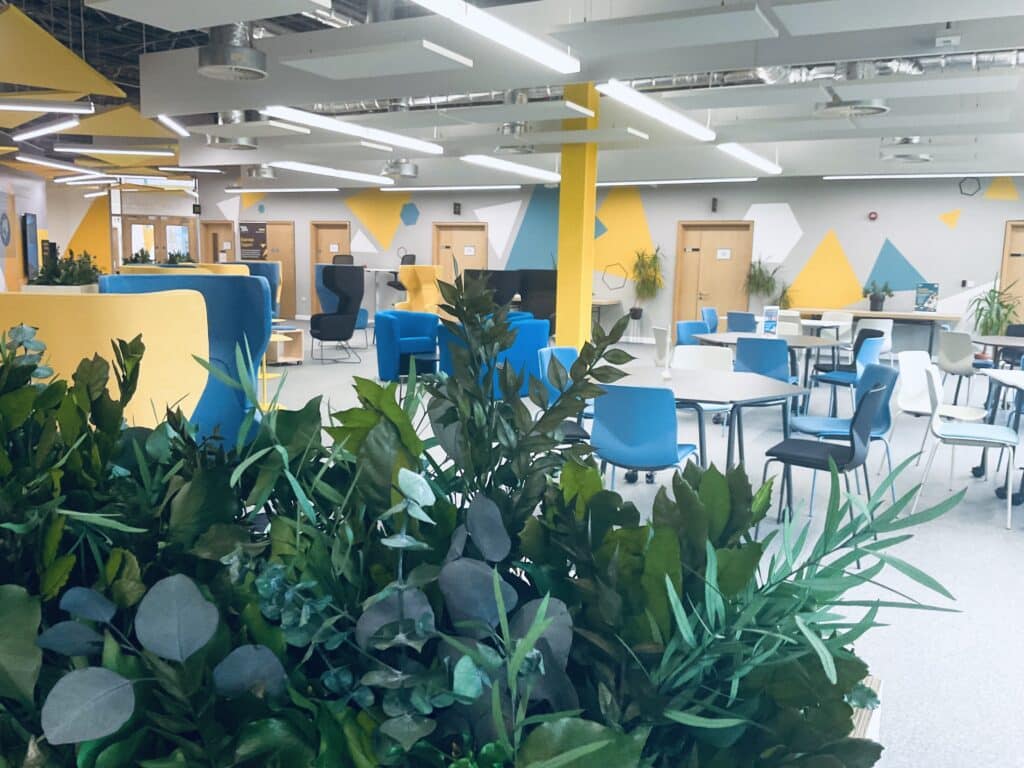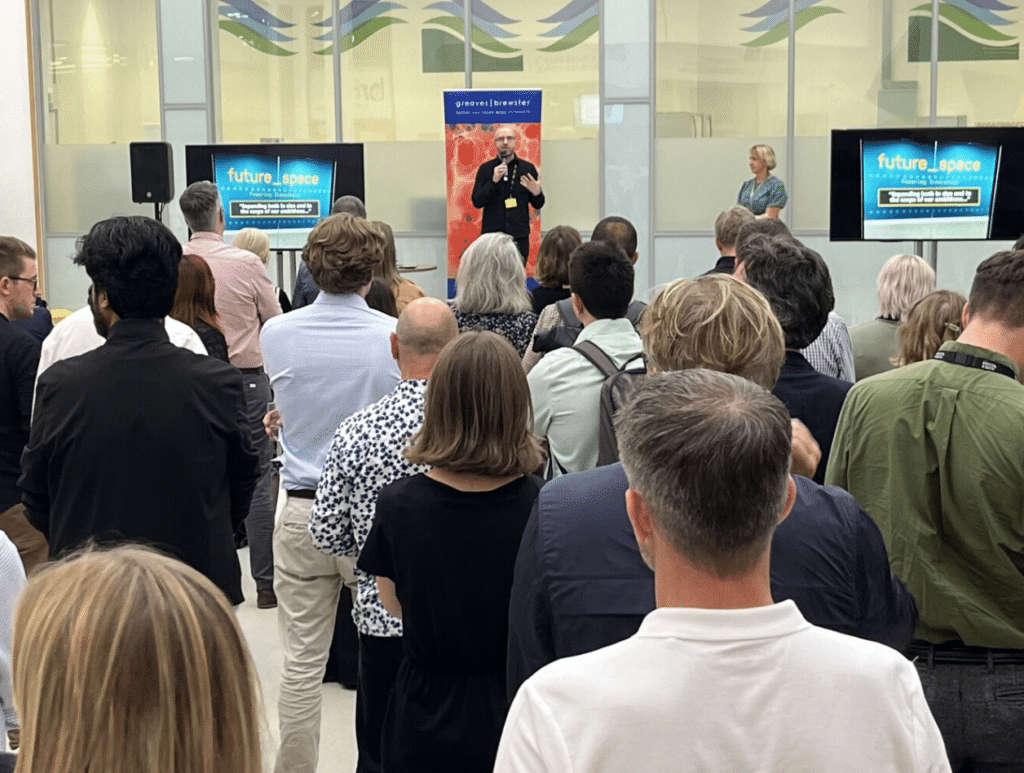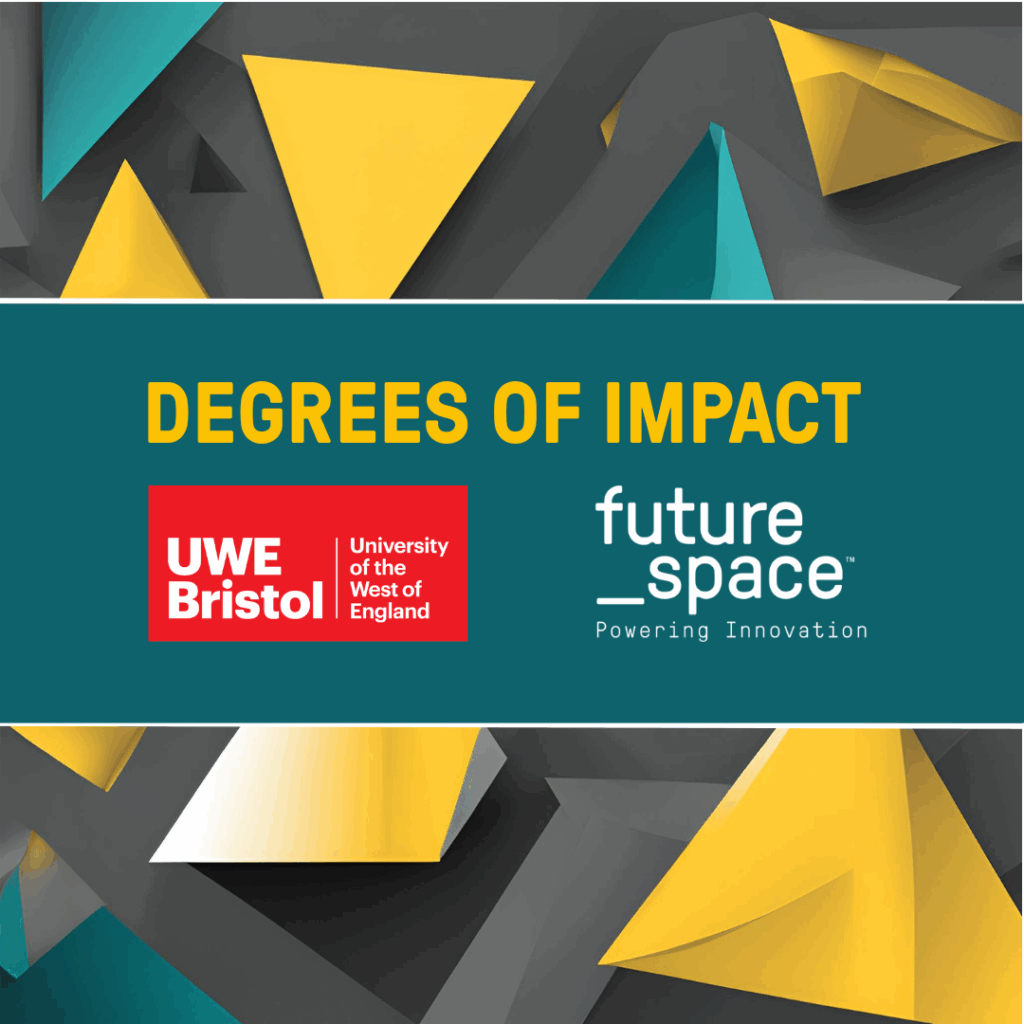Earlier this year, the UK government published the final impact and process evaluation of the University Enterprise Zones (UEZ) pilot programme – a seven-year initiative launched to test whether co-locating small businesses with universities in bespoke innovation hubs could accelerate regional growth, knowledge exchange, and R&D-led entrepreneurship.

Five UEZs were piloted between 2016 and 2021 in Bristol, Cambridge, Bradford, Nottingham and Liverpool. The resulting report offers a comprehensive, mixed-methods evaluation of their performance – combining surveys, interviews, and econometric analysis.
One name stands out: Future Space, based at the University of the West of England (UWE) in Bristol, is consistently highlighted as one of the most integrated and impactful UEZs in the national programme. In this blog, we unpack the key findings from the final report and spotlight how Future Space has delivered on the vision of the UEZ model.
What are University Enterprise Zones?
The UEZ pilot, funded by the former Department for Business, Energy and Industrial Strategy (BEIS), aimed to address market failures in the provision of affordable innovation space, particularly where small businesses lacked access to university research and networks.
The objectives were two-fold:
- Encourage universities to act as strategic partners in local growth, particularly through engagement with Local Enterprise Partnerships (LEPs).
- Stimulate the development of incubator and ‘grow-on’ space in locations that encourage collaboration between businesses and universities.
Capital funding was awarded to five universities to develop these spaces:
- Future Space at UWE Bristol
- The Bradfield Centre in Cambridge
- Digital Health Enterprise Zone (DHEZ) at University of Bradford
- Ingenuity Centre at University of Nottingham
- Sensor City in Liverpool (closed in 2021)
Each site had its own character and sector focus. While their models varied, they shared a common ambition: to bring research, innovation and enterprise closer together.
How did the UEZs perform overall?
The evaluation reveals a mixed picture. While the physical delivery of innovation space was broadly successful, the outcomes for business performance and formal knowledge exchange were more uneven.
Key successes included:
- Attracting high-potential SMEs and early-stage tech businesses.
- Creating high-quality office and lab space near universities.
- Facilitating student placements, graduate recruitment, and some academic partnerships.
Challenges and limitations:
- Engagement with Local Enterprise Partnerships (LEPs) was minimal across the board.
- The number of businesses supported fell short of initial ambitions.
- Formal university-business collaborations, such as joint R&D projects, declined over time.
- Many businesses reported that UEZ membership had little direct impact on revenues or growth.
Despite these challenges, the programme did demonstrate value in fostering proximity-based relationships and creating an “innovation pull” through place-based design. And among the five UEZs, Future Space emerged as a model of good practice.
Future Space: A Standout Case

Launched in 2016, Future Space is an innovation centre on UWE Bristol’s Frenchay Campus, managed by Oxford Innovation Space. Its sector focus spans advanced engineering, green tech, digital innovation, and health technology – aligned with the university’s research strengths and Bristol’s regional industrial base.
According to the evaluation, Future Space has:
- Supported amongst the highest number of businesses of all the UEZs.
- Maintained strong links with UWE, including research embedded across both organisations.
- Developed explicit entry criteria to ensure alignment with the university’s goals and sector focus.
- Created a pipeline with UWE’s on-campus startup incubator, Launch Space, enabling early-stage businesses to grow into commercial ventures.
- Its success rests on three pillars: collaboration, location and management.
1. Deep Collaboration with UWE
Unlike other UEZs that operated at arm’s length from their host institutions, Future Space has embedded university engagement into its core offer. The evaluation notes that businesses at Future Space were more likely to report:
- Using UWE facilities such as the Schools of Engineering and Applied Sciences.
- Collaborating with academic staff on R&D.
- Recruiting graduates and hosting student placements.
- Engaging in joint innovation projects.
This level of integration was particularly impactful in the early years, and Future Space has recently made university collaboration a formal requirement for new tenants.
2. Strategic Location
Being based on campus is a key factor in Future Space’s success. The report identifies proximity as a major driver of university-business collaboration. Where UEZs were located off-campus (such as the Bradfield Centre or Ingenuity Centre), levels of engagement with university facilities and staff were typically lower.
Future Space’s position next to high-value university assets and its visibility within the wider UWE innovation ecosystem have made it a natural hub for partnership and shared activity.
3. Proactive Management
The evaluation highlights the importance of capacity and leadership in UEZ performance. Future Space’s management team – delivered by Oxford Innovation Space – was praised for its proactive relationship-building with both internal and external stakeholders.
This includes engagement with regional partners such as the West of England LEP (a rarity among UEZs), and connections with business support networks, investors, and sector bodies.
The combination of external delivery expertise and close university ties has enabled a tailored, high-touch support offer for scaling tech businesses.
How did it compare to other UEZs?
- Bradfield Centre (Cambridge): The largest site, with a strong community feel and access to investors, but weak ties to the University of Cambridge.
- DHEZ (Bradford): Strong focus on health RDI and public sector links (particularly NHS), but less emphasis on business growth.
- Ingenuity Centre (Nottingham): Aligned with zero-carbon and medtech sectors, but lacking deep integration with university faculties.
- Sensor City (Liverpool): Closed in 2021 following COVID-19 impacts and never achieved its full vision.
Future Space stood out for consistently maintaining both its business support offer and its academic engagement, something few other centres achieved over time.
So, what does this mean?
The final evaluation shows that place-based innovation infrastructure can work – but only when paired with genuine partnership, clear sector focus, and active engagement.
Future Space has proven that university-business collaboration doesn’t happen by accident. It requires co-location, shared goals and management teams with the skills and capacity to broker relationships and deliver tailored support.
For other universities and local authorities thinking about how to support high-growth businesses, Future Space offers a compelling blueprint for combining academic assets with commercial ambition in a shared innovation ecosystem.
Read the full ‘University Enterprise Zones – Final Impact and Process Evaluation’ report:
University Enterprise Zones Final Impact and Process Evaluation
